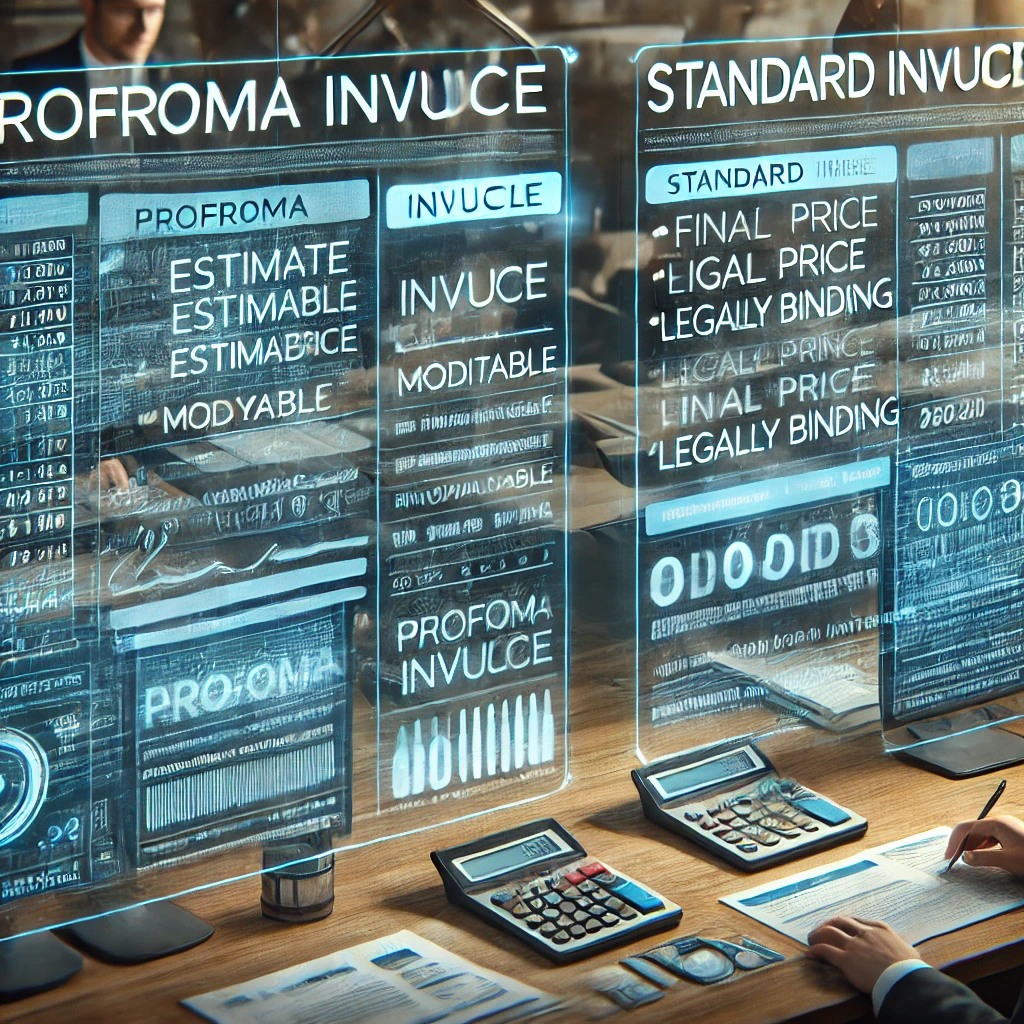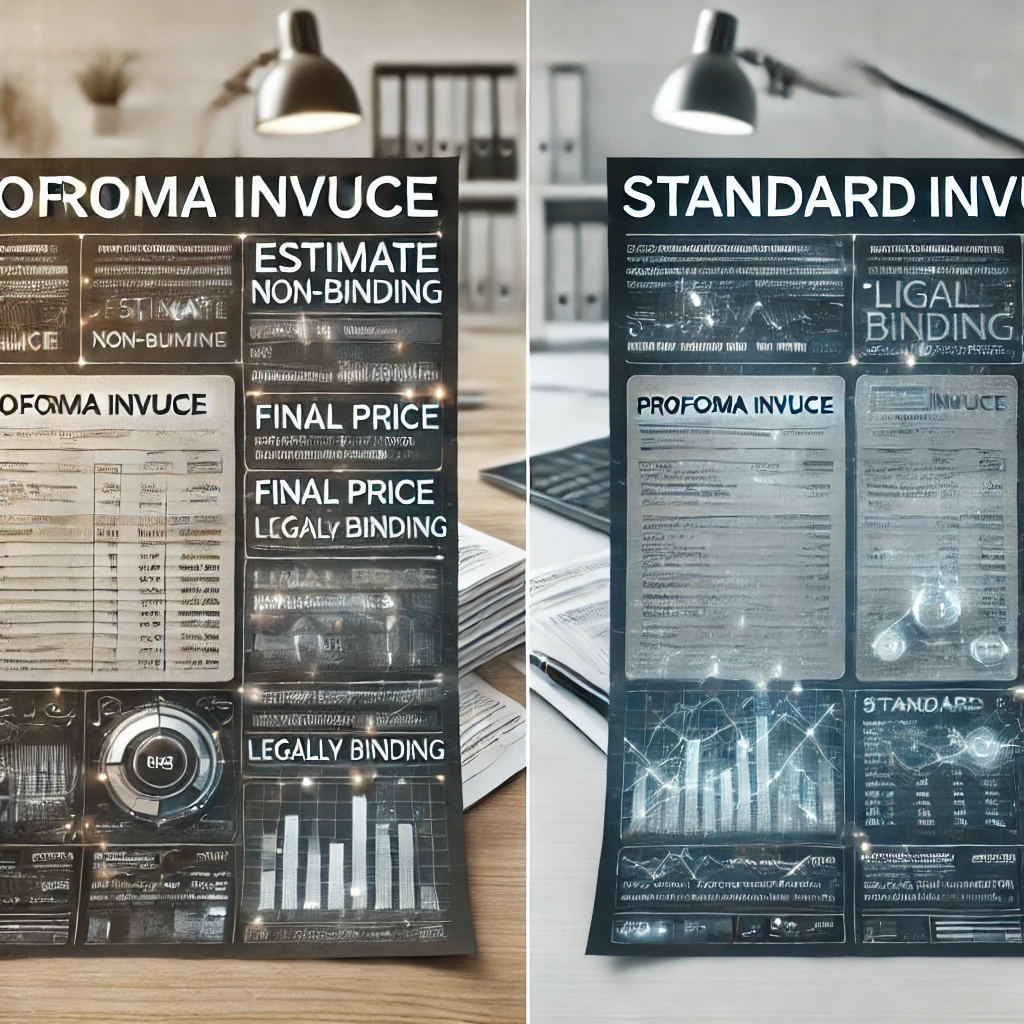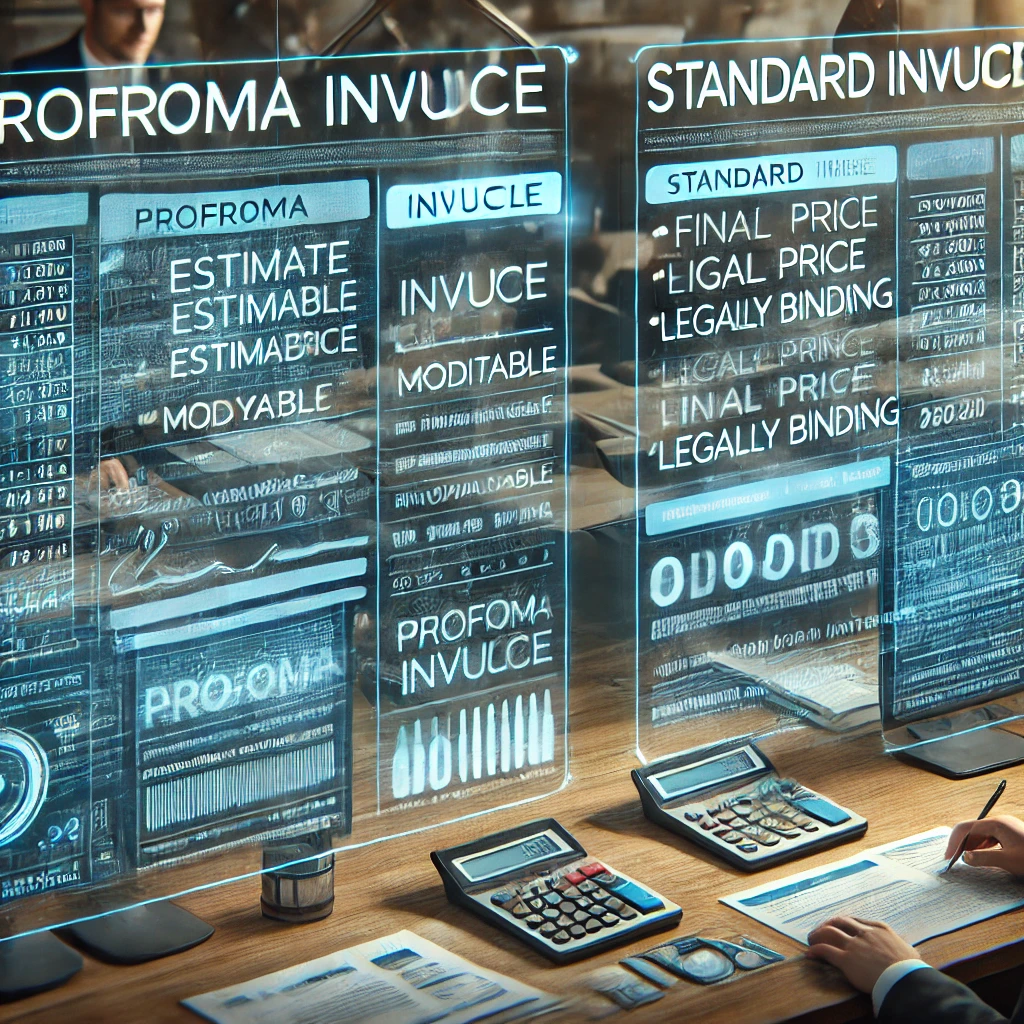Understanding the Difference Between a Proforma Invoice and an Invoice

What is a Proforma Invoice?
A proforma invoice is a preliminary bill of sale sent to buyers before a shipment or delivery of goods. It’s essentially a good faith estimate that details the items, quantities, and prices of products or services to be provided.
Key characteristics of a proforma invoice:
- Issued before the transaction is complete
- Contains estimated costs and terms
- Not recorded in accounting records as a true invoice
- Often used in international trade for customs purposes
- May be subject to change
What is a Standard Invoice?
A standard invoice, also known as a commercial invoice, is a bill sent by a seller to a buyer after goods or services have been provided. It represents a demand for payment and includes the final, agreed-upon prices.
Key characteristics of a standard invoice:
- Issued after goods or services have been delivered
- Contains final, accurate prices and terms
- Recorded in accounting records as accounts receivable
- Legally binding document for tax purposes
- Generally not subject to change once issued

Key Differences Between Proforma and Standard Invoices
- Timing of Issuance
- Proforma: Sent before goods or services are delivered
- Standard: Sent after goods or services are delivered
- Purpose
- Proforma: To provide an estimate or quote for the buyer
- Standard: To request payment for goods or services provided
- Legal Status
- Proforma: Not legally binding, can be modified
- Standard: Legally binding document for payment and tax purposes
- Accounting Treatment
- Proforma: Not recorded in official accounting records
- Standard: Recorded as accounts receivable in the seller’s books
- Level of Detail
- Proforma: May contain estimated quantities and prices
- Standard: Contains final, accurate quantities and prices
- Use in Customs and International Trade
- Proforma: Often used for customs clearance and determining import duties
- Standard: Used for actual payment and recording of the transaction
- Payment Terms
- Proforma: May include proposed payment terms
- Standard: Includes final, agreed-upon payment terms
- Modification
- Proforma: Can be easily modified if terms change
- Standard: Generally not modified once issued (except for credit notes or corrective invoices)

When to Use a Proforma Invoice
- International Shipments: To help buyers understand potential costs and for customs valuation
- Complex Orders: When final costs are not yet determined due to variables in the order
- Custom-Made Products: To provide an estimate before production begins
- Service Contracts: To outline proposed services and estimated costs
- Deposits or Advance Payments: To request partial payment before work begins
When to Use a Standard Invoice
- Completed Sales: After goods have been delivered or services rendered
- Regular Business Transactions: For routine sales of products or services
- Legal Record Keeping: To maintain accurate financial records for tax purposes
- Accounts Receivable: To track money owed to the business
- Payment Collection: To formally request payment for goods or services provided

Best Practices for Using Proforma and Standard Invoices
- Clear Labeling: Clearly mark documents as either “Proforma Invoice” or “Invoice” to avoid confusion
- Consistent Numbering: Use different numbering systems for proforma and standard invoices
- Detailed Information: Include all relevant details such as item descriptions, quantities, prices, and terms
- Timely Issuance: Send proforma invoices promptly for estimates, and standard invoices immediately after delivery
- Accuracy: Ensure all information on standard invoices is accurate before sending
- Follow-Up: Use proforma invoices as a basis for follow-up communications and to finalize orders
Conclusion
Understanding the difference between proforma invoices and standard invoices is crucial for smooth business operations, especially in international trade. While proforma invoices serve as preliminary estimates and are useful for customs and complex orders, standard invoices are the final, legally binding documents used for payment collection and accounting purposes.
By using each type of invoice appropriately, businesses can improve their quoting process, streamline customs procedures, and maintain accurate financial records. Whether you’re a small business owner, an accountant, or involved in international trade, knowing when and how to use proforma and standard invoices will help you navigate transactions more effectively and professionally.
Remember, while proforma invoices offer flexibility and are great for preliminary discussions, it’s the standard invoice that seals the deal and ensures you get paid for your goods or services. Use both wisely to build strong, transparent relationships with your customers and partners.
